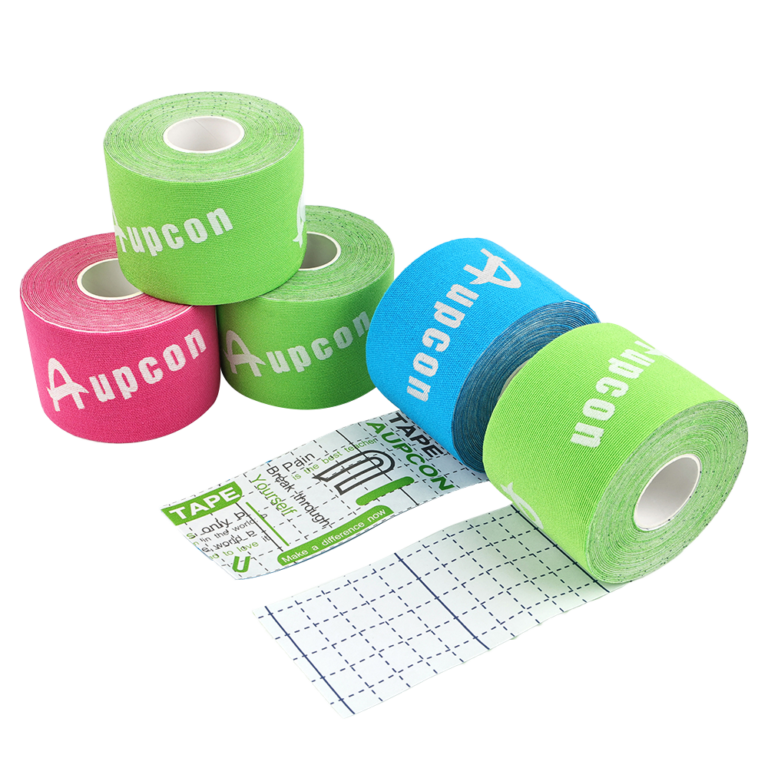Durante l'attività sportiva, gli atleti professionisti o gli amanti dello sport utilizzano nastro kinesiologico per il ginocchio per prevenire, supportare o curare i problemi al ginocchio. Protegge l'articolazione del ginocchio migliorando le prestazioni e riducendo il rischio di gravi lesioni. Quando ti infortuni al ginocchio, è essenziale sapere quale nastro adesivo per infortuni sportivi è adatto a te e il modo corretto di usarlo per aiutarti sulla strada della guarigione.

Ci sono molti tipi di nastro kinesiologico in cotone per il ginocchio sul mercato, e può essere difficile per i non addetti ai lavori sapere come acquistare il nastro terapeutico appropriato ed efficace. Se vuoi imparare come fasciare le ginocchia in modo sicuro ed efficace e trovare il nastro migliore per te, leggi questo articolo in dettaglio. Parleremo del nastro kinesiologico per vari problemi al ginocchio e di come usarlo in modo efficace. Così le tue ginocchia potranno riposare facilmente e fare gli sport che ami.
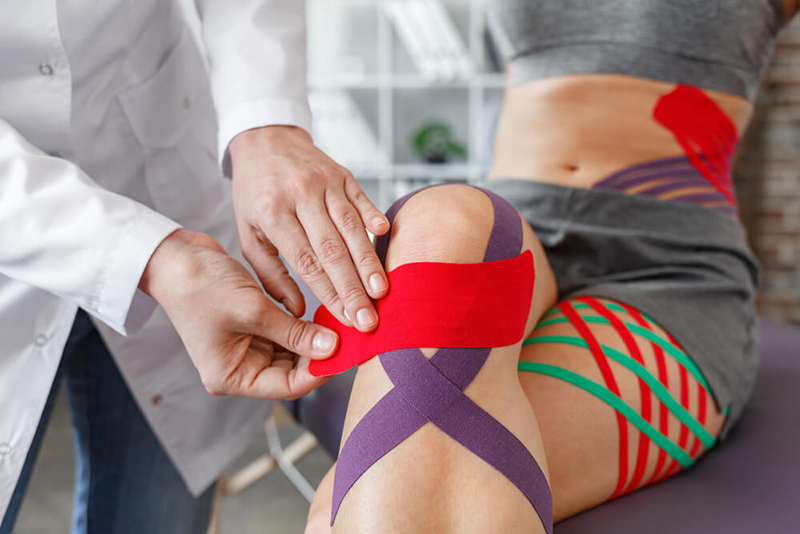
Alcuni degli infortuni al ginocchio più comuni includono:
Lesione del legamento crociato anteriore (LCA).
Una lesione del legamento crociato anteriore è una lesione del legamento crociato anteriore (LCA), uno dei quattro legamenti che collegano la tibia al femore. Una lesione del legamento crociato anteriore è diffusa nelle persone che praticano basket, calcio o altri sport e richiede improvvisi cambi di direzione.
Fratture
Le ossa del ginocchio, inclusa la rotula (rotula), possono rompersi durante cadute o incidenti automobilistici. Inoltre, le persone le cui ossa sono indebolite dall’osteoporosi possono talvolta subire una frattura del ginocchio semplicemente facendo un passo sbagliato.
Menisco lacerato
Il menisco è la cartilagine dura e gommosa che funge da ammortizzatore tra la tibia e il femore. Può rompersi se si torce improvvisamente il ginocchio mentre si sostiene il peso.
Borsite al ginocchio
Alcune lesioni al ginocchio possono causare l’infiammazione della borsa, causando gonfiore nella parte anteriore del ginocchio. La borsite si verifica quando la borsa diventa spesso irritata, danneggiata o infetta e produce troppo liquido.
Tendinite rotulea
La tendinite provoca irritazione e infiammazione di uno o più tendini, i tessuti spessi e fibrosi che attaccano i muscoli alle ossa. Corridori, sciatori, ciclisti e coloro che praticano sport e attività di salto possono sviluppare tendinite rotulea.
Quindi, come prevenire e alleviare il dolore nelle varie aree del ginocchio? La maggior parte delle persone sceglie di utilizzare nastro kinesiologico per il ginocchio.
Cosa è nastro kinesiologico per il ginocchio?
Il nastro kinesiologico per il ginocchio è una striscia per il dolore muscolare realizzata con materiali come cotone e spandex. È molto elastico e leggero al tatto. È vicino alla pelle e confortevole e spesso utilizzato nello sport e nella terapia fisica per supportare muscoli e articolazioni e favorire il recupero. Per la rotula o la rotula, il nastro kinesiologico per il ginocchio può essere applicato in modi specifici per fornire supporto, migliorare la circolazione e alleviare il dolore associato a condizioni come il disturbo del tracciamento rotuleo o la tendinite rotulea.
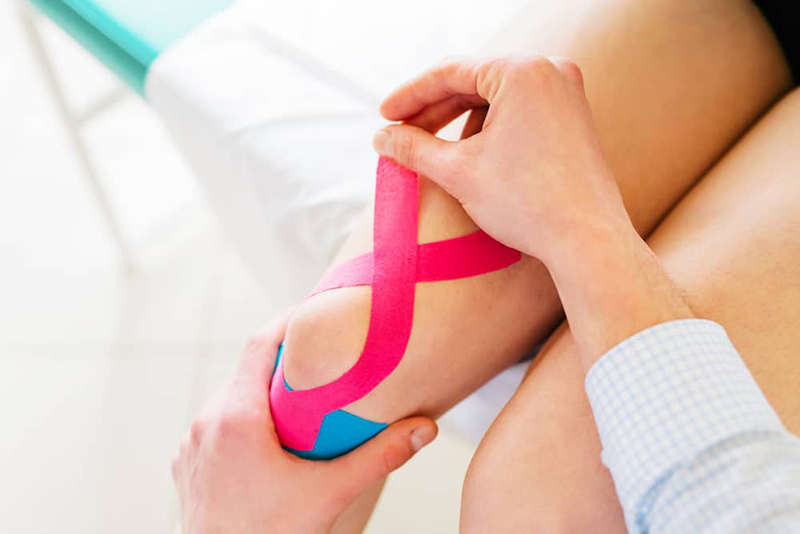
Quali effetti ha il nastro kinesiologico sulle ginocchia?
1. Allevia il dolore e il disagio
Le ginocchia svolgono un ruolo importante quando il corpo si muove. Se infortunate, altri gruppi muscolari (come la parte bassa della schiena o le cosce) dovranno recuperare il gioco, il che può causare una reazione a catena di rigidità e dolore in più aree del corpo. Pertanto, le strisce per il dolore muscolare possono aiutare ad alleviare il dolore al ginocchio, alleviando o riducendo il dolore in altre parti del corpo.
2. Ridurre la possibilità di subire altri infortuni
Dolore al ginocchio è solo uno dei tanti problemi che possono presentarsi alle ginocchia e, poiché le ginocchia sono una combinazione di forza e fragilità, altri problemi possono svilupparsi rapidamente se non si sta attenti. Il nastro kinesiologico per ginocchia sostiene e protegge il ginocchio mentre ci si muove, aiutando a evitare di aggravare lesioni esistenti o causarne di nuove.
Come usare il nastro kinesiologico per il ginocchio per alleviare il dolore al ginocchio?
Assicurati che la pelle sopra e intorno alle ginocchia sia pulita e asciutta.
1. Taglia due pezzi di strisce di nastro per lesioni sportive lunghe circa 25 cm (la lunghezza è determinata in base al ginocchio) e assicurati che i bordi siano arrotondati.
2. Siediti (o la persona che stai trattando) su uno sgabello e piega le ginocchia ad angolo retto (90 gradi).
3. Staccare la pellicola protettiva dei primi 3 cm di nastro kinesiologico per il ginocchio e fissarlo sulla parte superiore della rotula, appena sopra la parte interna dell'articolazione del ginocchio.
Una volta fissato, allungare il nastro kinesiologico per il ginocchio fino a raggiungere l'elasticità 65% e applicarlo sulla parte interna dell'articolazione del ginocchio.
4. Rimuovere una parte della seconda striscia antidolore muscolare per fissarla, allungarla fino a 65% e avvolgerla attorno alla parte anteriore della rotula.
5. Passare il panno sulla superficie della striscia antidolorifica per attivare l'adesivo.
Guarda il video del nastro kinesiologico per il ginocchio
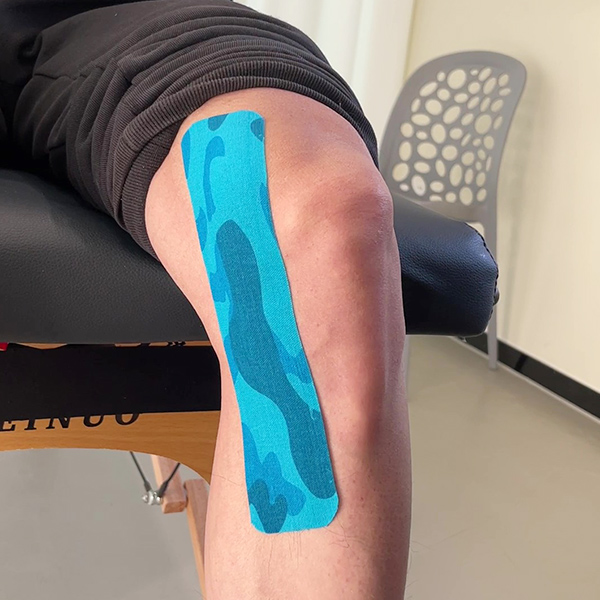
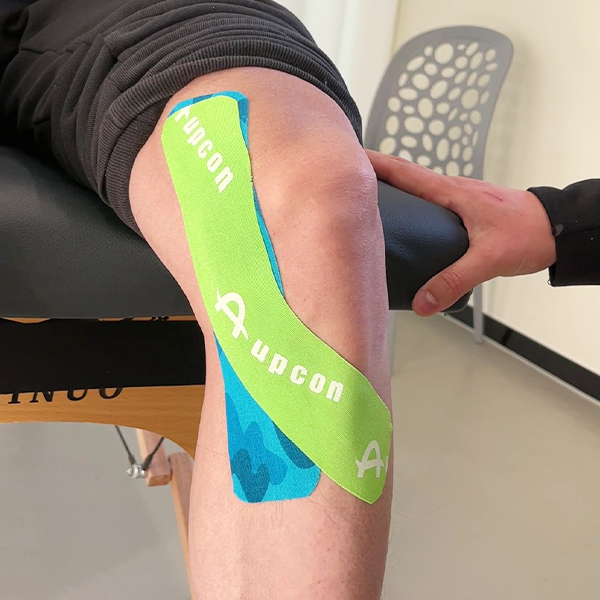
Come si fascia il ginocchio per allineare la rotula?
Assicurati che la pelle sopra e intorno alle ginocchia sia pulita e asciutta.
1. Preparare un nastro kinesiologico a forma di Y e due nastri kinesiologici a forma di L per il ginocchio (misurare la lunghezza specifica del ginocchio e confrontarla con l'immagine).
2. Siediti (o la persona che stai trattando) su una panca e piega le ginocchia.
3. Stacca 3 cm del rivestimento inferiore del nastro a Y e fissalo alla metà superiore della coscia. Allungare le restanti estremità del nastro terapeutico 30% lungo le estremità sinistra e destra della rotula per adattarle.
4. Strappare le estremità anteriori dei due nastri kinesiologici a L per il ginocchio e fissarli sotto la rotula. Allungare 50% sui lati sinistro e destro per fissare la rotula.
5. Pulire la superficie delle strisce di nastro adesivo per infortuni sportivi per attivare l'adesivo.
Guarda il video del nastro per il ginocchio
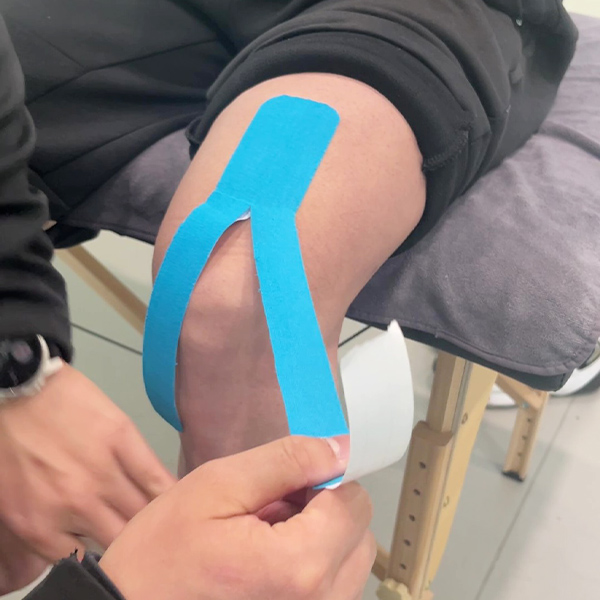

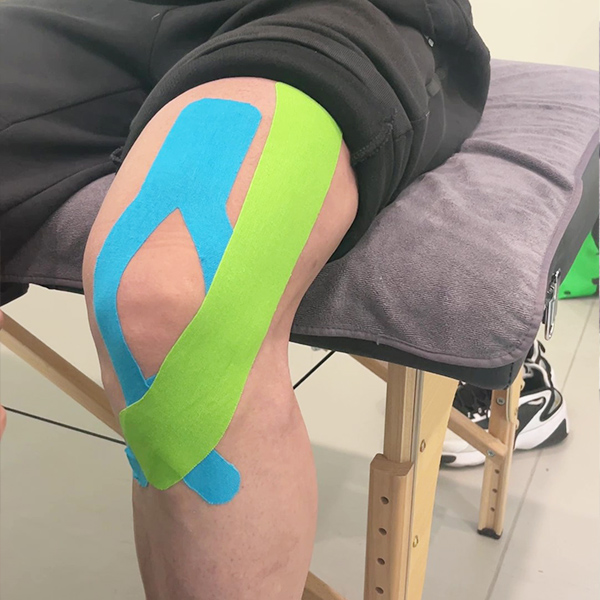

Come rimuovere in sicurezza il nastro kinesiologico per il ginocchio?
1. Il nastro kinesiologico per il ginocchio di solito ha un adesivo diverso da nastro atletico rigido, che si attiva con il calore. Per rimuovere il nastro terapeutico comodamente senza disturbare l'articolazione del ginocchio, si consiglia di applicare dell'olio (ad esempio, olio d'oliva o per bambini). Strofinare l'olio dentro e intorno all'adesivo del nastro terapeutico per ridurre l'appiccicosità e lasciarlo agire per almeno 15 minuti. Dopo aver applicato l'olio, il nastro kinesiologico dovrebbe staccarsi rapidamente dalla pelle con una doccia calda o con acqua calda e una spugna.
2. rimuovere la striscia antidolore muscolare lentamente e con attenzione per evitare di irritare la pelle. Il metodo migliore è riavvolgere la striscia di nastro adesivo per infortuni sportivi al suo posto anziché staccarla dalla pelle. Per ridurre il disagio, premere sulla pelle mentre si rimuove la striscia antidolore muscolare nella direzione opposta.
Continua a leggere per saperne di più come usare il nastro kinesiologico in ginocchio per affrontare diverse condizioni.
Cerchi il nastro kinesiologico più economico?
Il nastro kinesiologico più economico è ovviamente quello in fabbrica. Il nastro kinesiologico più economico è quello senza l'intermediario che fa la differenza. Ad esempio, AUPCONIl leader produttore di nastri per kinesiologia in Cina. Contattaci subito per ottenere prezzi all'ingrosso.



